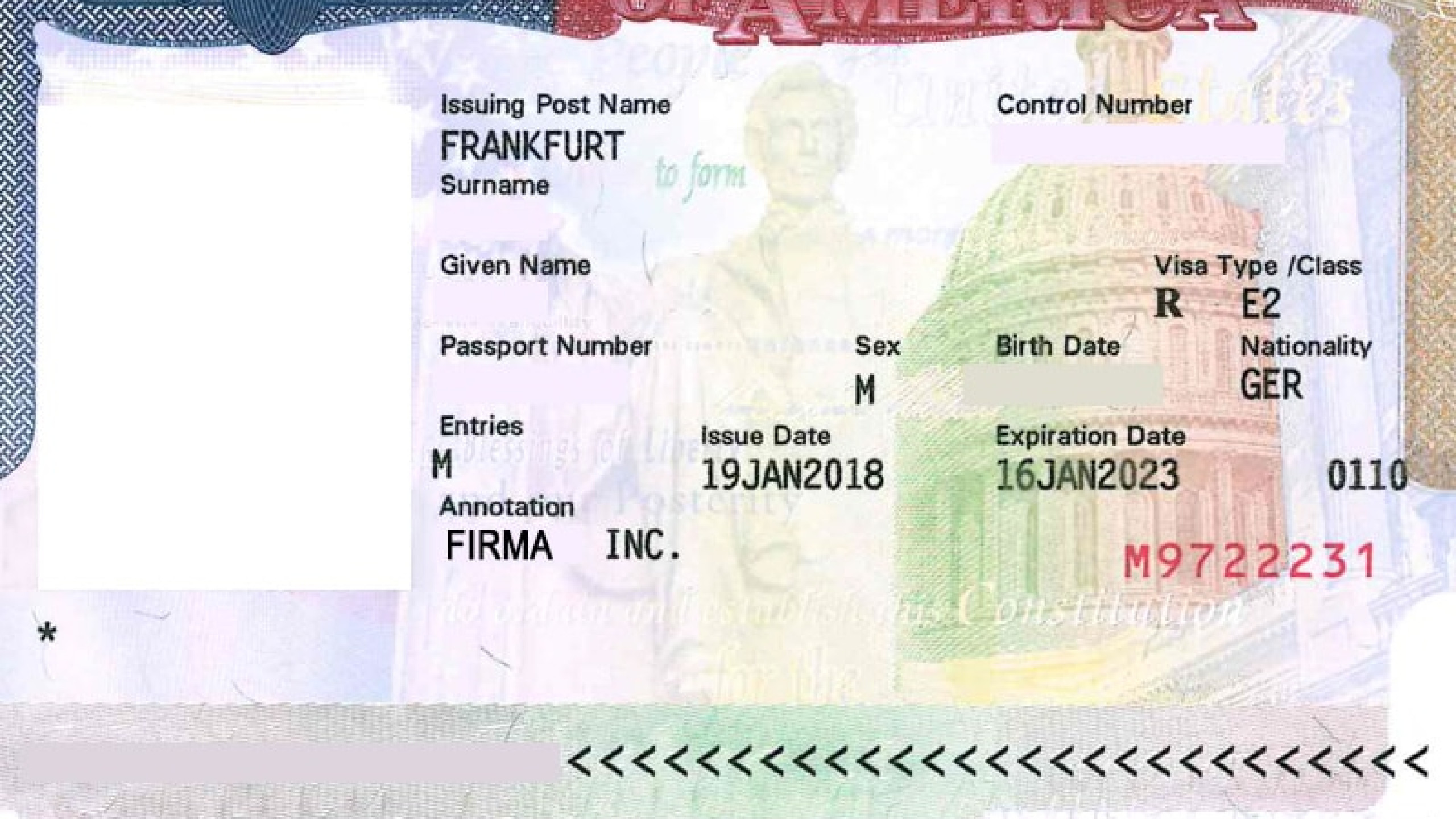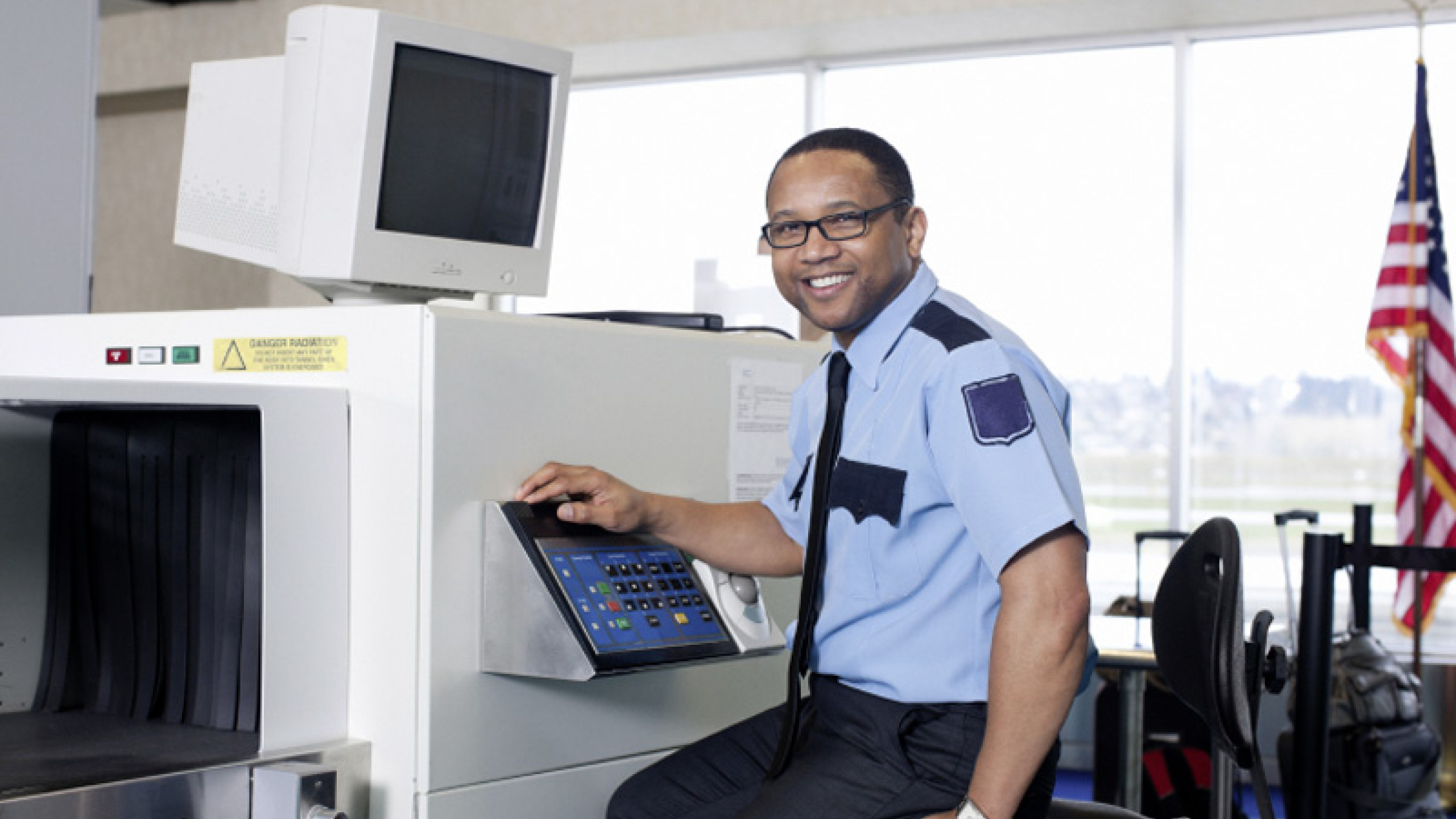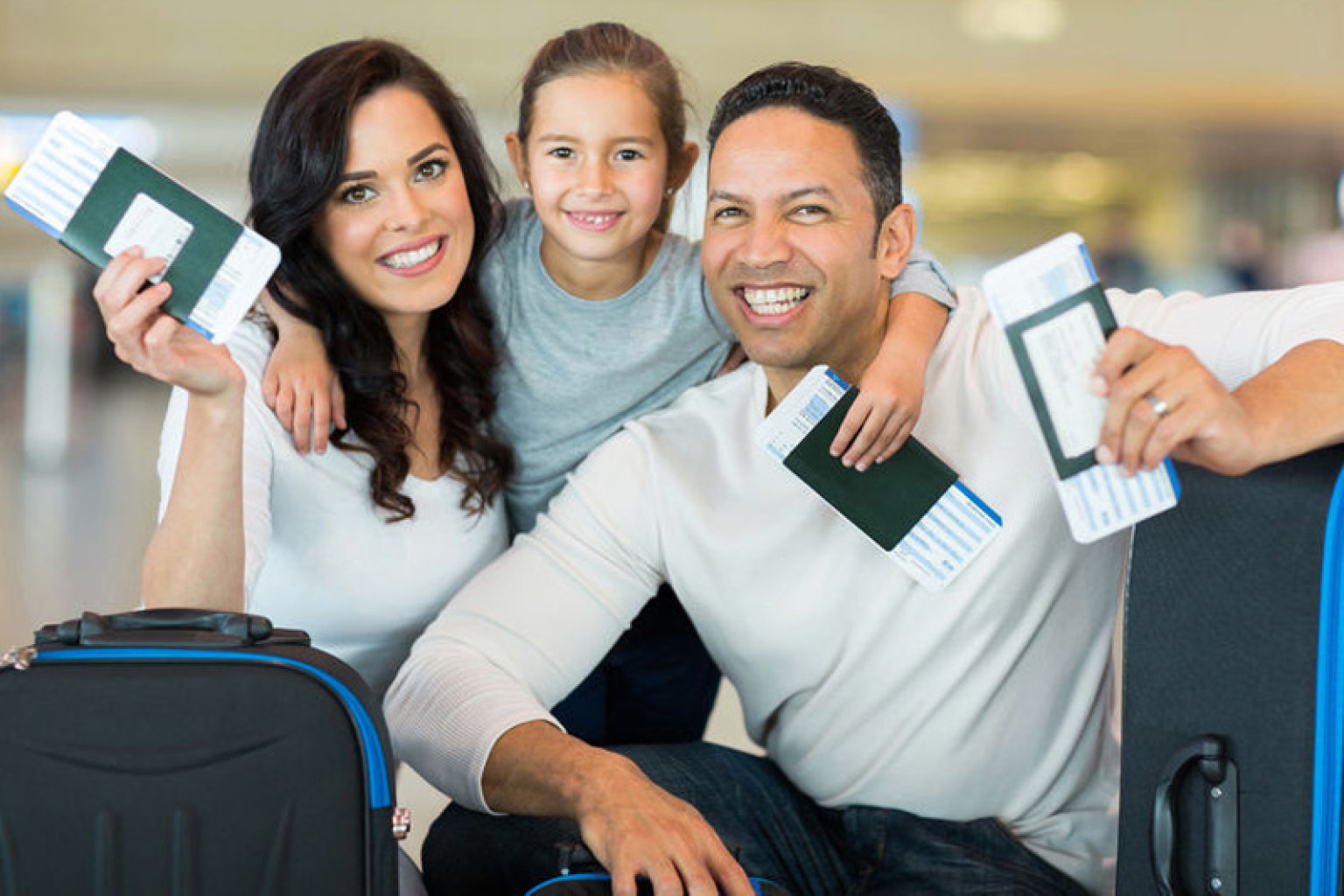The E-2 visa, also known as the Treaty Investor Visa or Investor Visa, is a classic work visa for the USA. Any company thats wants to invest considerable capital or has invested in the U.S. economy can - regardless of a previous business activity in the home country – send employees to the U.S. via an E-2 visa. We will be happy to provide you with comprehensive and individual advice on this work visa and help you with the application process.
Visa category: work visa
Target group: Investors (and their employees) planning to set up a branch or company in the USA
Validity: 5 years
Lengsth of stay: up to 2 years per entry
Characteristics: based on investments
The E-2 visa is a subcategory of the E-Visa and grants holders work and residence permit for the USA. Once a company has successfully applied for an E-2 visa for the first employee, it is considered to be "E-registered". In this case, additional employees in this company can be hired via a simplified application process also receive an E-2 visa.
Employees are then entitled to full employment, both under a longer-term work assignment, as well as for several single business trips.
This work visa is based on bilateral treaties in the context of investment projects in the USA. Currently, there are approximately 80 nations that maintain such relationships with the United States. Only nationals of the respective treaty countries, including naturalized persons, can obtain this status.
To the treaty countries include many European countries, including Germany, Austria and Switzerland.

In order to be eligible for the investor visa, the company must fulfill certain requirements on the one hand, and the employees themselves on the other.
Minimum period of employment
In contrast to the L visa, the E visa category does not require proof of a minimum period of employment in the company. As long as a new employee can prove that he/she has the necessary specialised knowledge, he/she can also obtain an E-2 visa.
Before employees can obtain an E-2 visa, the company must be able to provide the following evidence as part of an E-registration:
Employees must also meet certain conditions to be eligible for an E-2 visa.

Depending on the nationality of the applicant, the validity of the E-2 visa also varies. The exact duration is determined with the help of the so-called reciprocity schedule defined. German citizens, for example, receive an E-2 visa with a maximum validity of five years.
However, consular officials also have the option of limiting the duration of the visa. This is the case, for example, if the company is quite small or has relatively low investment capital.
Residency status is granted by the immigration officer at the border for a maximum of 2 years at a time, until the visa expires and must be reapplied for through the consular process. In doing so, the exact length of stay is noted on the E-2 visa holder's I-94 form. An extension of this right of residence is usually possible as long as the U.S. company registration is valid, an employment contract exists and the visa is valid.
The cost of the E-2 visa is 299.25 € (315 $) per applicant. This standard application fee charged by US consulates and embassies must be paid by each applicant and is neither refundable nor transferable.
The processing fee can be paid either by online bank transfer, online payment by debit card or cash payment at a bank.
Normally, this fee can be used to make an appointment within one year of the payment date.

Furthermore, certain E-2 applicants may incur additional costs:
Further information about the different visa fees, other possible costs and the current Payment methods can be found on our fees page.
It is important to emphasize that a thorough understanding of the process and careful planning of the necessary steps are essential to successfully applying for an E-2 visa. From choosing the right type of visa according to the purpose of travel to correctly completing the application forms and preparing for the visa interview, there are many important aspects to consider.
The following section explains the individual steps for applying online for an E-2 visa for the USA and provides guidelines for a successful visa application.
As a rule, applicants for the E-2 visa between the ages of 14 and 79 must go through the consular process, which means that in most cases the visa is applied for during a personal interview at a responsible US representation (US consulate or US embassy) in the home country.
It is essential that all requirements for applicants are met and that all necessary documents are available in advance of the visa application.
As the first registration, i.e. the first E-2 visa application submitted by a company, must first be checked by the company itself, this takes considerably longer. A processing time of approx. two to six months can be expected. Added to this is the waiting time until the interview appointment. The availability of these appointments depends on the season as well as on the respective consulate itself. In general, however, you should allow around six months for the entire application.
After successful E registration, there is no need for a detailed review of the company. In this case, employees only have to factor in the waiting time until the interview appointment.
For both initial and subsequent registrations, employees will be sent their passport with the E-2 visa approximately one week after the consulate appointment.
To apply for their E-2 visa for the USA, applicants must follow the steps below:
The first step to a successful E-2 application for the USA is to fill out the electronic Visa application form DS-160 about the Website of the U.S. Department of State.
The online application form must contain detailed information about the applicant and the planned stay in the USA. Please have the following documents ready to complete the online DS-160 form:
Just a few days after submitting your DS-160 form, you can check the status of your visa application online.
Did you know that the professional processing and return of your DS-160 is Part of our service is?
Place on the Website of the Visa Information Service Your visa profile, which can then be used to apply for the E-2 or all future visas.
Here you can also pay the visa processing fee and make an appointment for the visa interview.
When you commission our US Visa Service, we create the required online profile, pay the consular visa application fee and arrange the appointment for the personal interview with the US consular officials.
Show up personally on interview day in the US consulate or at the US embassy. Your documents will be checked there and you will be interviewed by the consular officers.
The following documents must be prepared and brought along for the appointment at the US sonsulate or US embassy:
Be prepared to answer questions about your visa application, your planned stay in the US and other relevant topics.
Generally, E-2 visa applicants are notified at the end of their visit to the US consulate or embassy whether or not their visa application will be approved.
Our visa consultants will prepare you perfectly for this important appointment and provide you with the necessary documents to ensure that your visa interview runs as smoothly as possible.
If your E-2 visa application is approved, you will receive your passport with the E-2 visa returned by post or can arrange a pick-up appointment.

The E-2 visa contains a variety of information that identifies the visa holder and defines his or her rights and restrictions while in the United States.
It is crucial that you review this information carefully and ensure that it meets the requirements of your planned stay in the USA.

Here are some of the dates and information that can be found on a US visa:
Visas for the United States of America are issued by the US consulates and embassies.
Normally, US consular officers decide whether to issue a visa for the USA on the day of the visa interview. Thus, applicants for the E-2 visa usually learn during the interview appointment whether the visa will be granted or not.
You can check the status of your US visa application online.
Your E-2 visa was granted verbally by the US officials and is now being finalized.
After the E-2 visa has been printed or issued in the passport, the passport with the corresponding US visa will be sent by post.
In some cases, US consular officers determine not to approve the E-2 visa immediately and issue a visa denial under Section 221(g) of the Immigration and Nationality Act (INA). The consequence of this is known as administrative processing.
The US visa application therefore requires a further security check and is subject to additional processing steps. Additional documents or information may be required from you.
If the US officials conclude that you do not qualify for the E-2 category, your E-2 visa to the US will be denied. The denial does not have to be justified, but applicants who are denied a visa are usually given further instructions on the day of the interview appointment or sent a denial letter after a certain processing time.
The reasons vary greatly depending on the visa category and applicant (e.g. assumption of an intention to immigrate, suspicion of illegal employment, incorrect application documentation).
First of all, after a visa refusal In principle, it is possible to submit a new application for an E-2 visa at any time. Theoretically, there is no waiting time for applicants until the next submission.
In our experience, it is only advisable to reapply for the same category if the conditions or circumstances have changed since the first visa application and you are able to provide evidence of these changes or new circumstances.
It makes little sense to apply for a new visa if you still do not meet the requirements of the respective visa category (e.g. proof of intention to return to your home country, financial means, proof of specialized professional knowledge, etc.). In practice, a new E-2 visa can therefore usually only be (successfully) applied for after several months or even years.
After a visa refusal, applicants must start the visa application process all over again. In addition, an alternative visa category may be considered for a work visa under certain circumstances. This should be carefully checked on a case-by-case basis. However, no appeal can be lodged against a visa refusal.
The consequences of a refused E-2 visa for the applicant depend on the reason for refusal.
Although the US authorities do not have to justify the refusal, you can politely ask for the reason for the refusal at the interview appointment at the US consulate or embassy. This information will help you if you wish to reapply for the E-2 visa.
Your E-2 visa application should be prepared carefully and conclusively by the second attempt at the latest. This includes choosing the correct category, filling out the DS-160 online form completely and correctly and collecting meaningful evidence.
Many applicants mistakenly assume that an approved US visa automatically grants entry to the United States. In fact, an E-2 visa in the passport does not automatically grant entry. Legally speaking, a US visa is not a residence permit, so even with an approved visa there is no guarantee of entry.
A valid US visa allows applicants to apply for entry into the US upon arrival at a border crossing such as an airport. Ultimately, the decision on entry rests with U.S. Customs and Border Protection border officials. They decide whether applicants may enter the country and, if so, for how long. Therefore, entry may be denied under certain circumstances.
After receiving your entry permit, it is advisable to go online to the I-94-website or by checking the entry stamp in your passport to see how long you are legally allowed to stay in the USA.

By the way: With Global Entry, certain biometrically registered and security-checked travelers can complete entry formalities independently and automatically at almost all major US airports. This allows foreign nationals to avoid long waiting times and enter the USA more quickly.
Unlike many other work visas for the USA, the E-2 visa can theoretically be extended indefinitely. The prerequisite for this is that the company continues to exist and that all other conditions for E-registration continue to apply.
If the company has more than 25 permanent employees, E-2 registration can be simplified. Otherwise, the initial registration process must be completed again.
Companies, as well as employees with E-2 visa enjoy a number of benefits:
Due to these considerable advantages, companies should always check in advance whether they are eligible for e-registration and thus in the future much time and costcompared to, for example, an L visa.
Restricted access may mean that not all employees can benefit from a company's e-registration:
Spouses and unmarried children under the age of 21 can apply for derivative status, which allows them to obtain an E-2 visa with an attachment.
After entering the US, spouses with a derivative E-2 visa can apply for a General Employment Authorization Document (EAD), either with the US Citizenship and Immigration Services (USCIS) or through Border Patrol agents upon entry. This means that they are not tied to a specific job or the company of the main applicant and can work in the USA independently of their partner.
This work permit is initially issued for two years and can be extended for a further two years, up to the maximum duration of stay of the main applicant.
Children of E-2 holders have the right to attend educational institutions (schools/universities) but are not allowed to engage in paid work. Once they reach the age of 21, they must either change their non-immigrant status or leave the country.

Spouses and unmarried children under the age of 21 may receive a so-called derived E-1 visa obtained. The duration of validity depends on the citizenship of the family members and is possible for maximum for the same period as the main applicant. Spouses have the option to work for any U.S. employer: either by applying for their own work permit (Employment Authorization Document, EAD), or corresponding note on entry by the border guards.
Family members under E-1 status may also attend public or private educational institutions. Once children reach the U.S. age of majority, they must either change their nonimmigrant status or leave the country.
The following reasons make a successful E-1 application difficult or result in immediate rejection:
As a rule, applicants find out on the day of their interview whether the visa will be granted or not. In certain cases, the visa applicant receives a rejection letter from the consulate after a certain processing time. A rejection must not justified be
Once this has happened, it usually takes several months or even years before a new visa can be (successfully) applied for. Theoretically, the applicant has the following options No waiting time until the next submission. However, experience shows that without blatant improvement of the requirements of the respective visa category (e.g. proof of the intention to return to the home country, financial means, proof of specialized professional knowledge, etc.), a renewed application does not seem to make much sense.
Unlike most work visas, the application for an E-1 visa does not have to be filed with the U.S. Citizenship and Immigration Services but can be submitted directly to a US Consulate be applied for.
Also a E-1 visa cannot guarantee you entry into the USA. Here, the U.S. border officials have the final say and decide whether you are allowed to enter and for how long you will be granted residency status.
Spouses and unmarried children under 21 years of age can obtain a so-called derivative E-2 visa. The duration of validity depends on the citizenship of the family members and is possible for a maximum of the same period as the main applicant. Spouses have the option to work for any U.S. employer: either by applying for their own work permit (Employment Authorization Document, EAD), or corresponding note on entry by the border guards.
Family members under E-2 status may also attend public or private educational institutions. Once children reach the U.S. age of majority, they must either change their nonimmigrant status or leave the country.
Spouses and unmarried children under 21 years of age are also granted a derived E-2 visa for the same period as the main applicant. Spouses may also apply for their own Employment Authorization Document (EAD), which is not tied to a specific job or the principal applicant's company. This is usually valid for two years, but can be extended for another two years.
Family members under E-2 status can also attend public or private educational institutions. As soon as the children reach the age of majority in the United States, they must either change their nonimmigrant status or leave the country.
The following reasons make a successful E-1 application difficult or could lead to immediate rejection:
Accompanying spouses and unmarried children up to the age of 21 years are granted a derived status on application and thus also an E-1 visa. Spouses with an E-1 visa may apply for an Employment Authorization Document (EAD) from the USCIS after entering the United States, which is not tied to a specific job or the main applicant's company, and thus may work in the U.S. independently of their spouse.
This work permit is issued for two years, with the possibility of an extension for a further two years up to the maximum duration of stay of the E-1 visa holder.
Children of E-1 visa holders may attend educational institutions (schools / universities), but may not engage in paid employment. If the children reach the age of majority in force in the U.S., they must change their nonimmigrant status or leave the country.
As a rule, applicants are informed on the day of their interview whether the visa will be issued or not. In certain cases, the visa applicant will receive a letter of refusal from the U.S. consulate after a certain processing time. A rejection does not have to be justified.
Once this has been done, a new visa can usually only be (successfully) applied for after several months or even years. In theory, there is no waiting period for the applicant until the next submission. However, experience has shown that without a blatant improvement in the requirements of the respective visa category (e.g. proof of the intention to return to the home country, financial means, proof of professional expertise, etc.), a new application does not appear to make much sense.
Unlike most work visas, the application for an E-1 visa does not have to be submitted to U.S. Citizenship and Immigration Services, but can be applied for directly at a U.S. consulate.
Even an E-1 visa cannot guarantee you entry to the United States. In fact the CBP officers have the final say and decide whether you are allowed to enter and for how long you will receive a resident status.
The fees for applying for a visa vary considerably depending on the category and may regularly increase or decrease, also as a result of exchange rate fluctuations. Therefore, every applicant should inform himself about the current fees before applying.
The application for a U.S. visa must be made through the official U.S. authorities, e.g. the U.S. consulates and U.S. embassies. The actual visa application is placed online, but almost every applicant must go to the consulate in person for a visa interview. With some work visas, it is sometimes necessary to send extensive files by mail to the U.S. authorities in the USA prior to the consular application procedure.
We advise and support companies and private individuals in all matters relating to visa applications. Read more about the requirements, duration and costs of a visa application.
A U.S. work visa is always tied to a specific U.S. company. In turn this means that you must have a specific employer in the United States before you can apply for a work visa.
The application process begins with the U.S. company that wants to hire you. The U.S. employer submits the petition either to the USCIS or to the responsible U.S. consulate. Since the application for a temporary work permit is made by the company for a future foreign employee, the U.S. employer is therefore the so-called petitioner, which means the official applicant. The future employee is the entitled person and thus the so-called beneficiary.
Many companies wonder what happens to the company-bound work visa when the visa holder no longer works for the U.S. employer.
In the event that the employment contract is terminated, the U.S. work visa automatically loses its validity. The derived visas of any family members who may have travelled with the employee also lose their validity upon termination of the work relations, as these are linked to the visa of the main visa applicant.
This means that the former visa holder is no longer allowed to enter the country with the work visa after termination of the employment relationship. Even if the work visa is theoretically still valid for a certain period of time, the visa may no longer be used to enter the United States. If the visa holder concerned wishes to travel to the U.S. for tourism or business purposes in the future, he / she must reapply for an ESTA or a corresponding visa, depending on the type of activities carried out on site and the duration of such activities.
Tip: In order to avoid discrepancies or problems with later entries, it is advisable to inform the U.S. consulate about the new work situation. For this purpose, it is sufficient if the responsible company representative (e.g. HR manager, supervisor, board of directors) sends an e-mail to the responsible consulate with the request to invalidate the visa of the former employee. If possible, a copy of the visa should also be attached. The consulate will then put a note in the system so that the CBP officers at the U.S. border are also informed.
In some cases, the visa holder will even be contacted directly by the U.S. consulate in order to send its passport with the work visa for the purpose of invalidation. In other cases, the visa will simply be invalidated by the CBP officer at the boder the next time he or she enters the United States.
Our recommendation: By sending a short message to the responsible U.S. consulate, companies can protect themselves and above all be sure that entry with the previously valid work visa is no longer possible. Do not take any risks and prevent possible abuse with company-bound visas.
Depending on the visa type, the application is made through the U.S. consulates in the home country or additionally through the U.S. Citizenship and Immigration Services (USCIS). In Germany, for example, you can apply at the U.S. Consulate in Berlin, Frankfurt/Main or Munich.
IMPORTANT: Since 2001, all applicants between the ages of 14 and 79 have been required to appear in person without exception. This means that all visa applicants of this age must submit their application at a personal interview at the U.S. consulate. No documents are submitted in advance by mail (exception: age groups under 14 and over 79, here the application is submitted by mail). Another exception at present is the Visa Reissuance Program.
All applicants of a nonimmigrant visa must be in addition to the online application DS-160 create a visa profile on the website of the Visa Information Service for the purpose of making an appointment and paying the visa processing fee.
In the first step you make the payment of the visa fee (please note that the application fee is not refundable if your visa is rejected). The fee can be paid by online bank transfer, SOFORT transfer (electronic funds transfer), debit card or cash at a bank. Usually you will receive an email notification that the payment has been received and your account has been activated so that the appointment can be made.
The interview appointment must be made either online via the visa profile or by calling the U.S. consulate call center at +49 (0)322 2109 3243. If you make the appointment online via your Visa Profile, you will have the opportunity to view the available appointments at the U.S. consulates in Berlin, Frankfurt/Main and Munich in a calendar. You will then receive an "Appointment Confirmation", i.e. an appointment confirmation including proof of payment of the visa application fee. Appointment postponements or cancellations are possible. However, if you postpone your appointment more than twice, you will have to go through the whole process from the beginning and pay the visa fee again. On our website you can find the current visa fees.
Depending on the type of visa, a certain application fee is charged per applicant, which is not refundable even if the visa is rejected.
Please make every effort to schedule an appointment in a timely manner. U.S. officials cannot and will not make allowances for individual travel plans.
Basically, in addition to the common DS-160 application form, applicants must have and the "Appointment Confirmation" you have to submit further documents. What these are also depends on the visa applied for.
Please note that your passport will be retained at the U.S. Consulate on the day of the interview and will be delivered by registered mail to a German address after a processing time of approximately one to two weeks. A personal pickup of the visa or an issuance on the same day are not possible!
Spouses and unmarried children under the age of 21 will be issued a derived J-2 visa for the same period as the principal applicant and may travel to the United States on that visa.
Employees or business owners must also meet a certain requirement profile to obtain an E-1 visa:
NOTICE: There is no minimum period of employment for employees within the group of companies, as is the case with the L visa. Consequently, new personnel can also be sent or deployed in the USA via E-1/E-2 status. However, it is also necessary to prove that new employees who are not managers or directors have the necessary specialized knowledge.
In contrast to many other work visas, not only the respective applicants (employees and/or company owners) receive an E-1/E-2 visa and thus a work permit for the U.S. in the initial application process - rather, the U.S. company is simultaneously "registered" with the U.S. authorities for (usually) five years as a whole at the U.S. consulate (= E-registration).
What are the advantages of this registration process?
Within the next five years, additional employees (including new hires, if applicable) can be sent to or deployed at the U.S. company in a greatly simplified process.
This eliminates the need to submit an elaborate application in advance for additional E-1/E-2 visa processes within the approved registration period. Employees can present their documents directly at a personal interview appointment at the relevant U.S. consulate. The simplified procedure means considerable cost and time savings for the company. Especially in comparison to the expensive L-visa procedure, the E-status is therefore always an alternative worth considering!
Nationality link of e-registration
The only shortcoming of E-registration: the nationality requirement for personnel. This means that German companies can only issue E-1/E-2 visas to German nationals. The same applies to companies that have a different nationality. For example, a French company would only be allowed to issue E-1/E-2 visas to French employees.
Extension of e-registration
After expiration of the E-1/E-2 registration, an application for renewal can be filed at the U.S. Consulate. If the U.S. company already has more than 25 U.S. employees at that time, a simplified renewal procedure can be used.
To the extent that 25 or fewer U.S. citizens are employed, a complete new application (as in the initial registration process) must be submitted to the appropriate U.S. consulate.
In fact, as long as the U.S. company exists and the E-1 visa requirements are still met, the E-registration can be renewed indefinitely.
First of all, you have to distinguish between the period of validity of the visa and the period of stay granted at the US border (see FAQ What is the difference between visa and status?).
Period of validity of the e-visa
The validity period of an e-visa depends on the nationality. Depending on the nationality, is determined on the basis of the so-called Reciprocity Schedule decided how long the visa will be valid. For example, German citizens usually receive a five-year E-1 or E-2 visa. But the issuance of a one- or two-year E-visa is also possible if the E-registration of the company is limited to less than five years.
Although the company's registration is usually for five years, the registration may be limited to one or two years, especially if it is a smaller company that can demonstrate only small trading volumes. In addition, for smaller companies, the issuance of E-1/E-2 visas may be based on the remaining registration period. However, for medium to large companies with a high number of U.S. personnel, E visas are most often issued for five years, regardless of how long the E registration remains valid.
Length of stay upon entry into the USA
Upon entry into the U.S., the border agent decides how long an e-visa holder is allowed to stay in the U.S.. And the allowed length of stay of the e-visa holder will be indicated on his/her Form I-94 noted. In the rain, an e-visa holder receives a two-year residence permit for the first and all subsequent entries. The extension of the stay in the U.S. is unlimited as long as the registration of the U.S. company is available, the employee has a valid visa and the employee can prove a (German or American) employment contract or assignment contract within the group of companies.
Accompanying spouses and unmarried children up to 21 years of age will be granted derivative status upon application, and thus also an E-1/E-2 visa. Spouses with an E-1/E-2 visa may nfter entering the countryto the USA a General Work Permit (Employment Authorization Document, EAD) apply to the U.S. Citizenship and Immigration Services (USCIS) and thus pursue work in the U.S. independently of their spouse.
The work permit is issued for two years, with the possibility of extension for another two years, up to the maximum duration of stay of the E-1/E-2 visa holder.
Children of E-1/E-2 holders may of course attend educational institutions (schools/universities), but may not engage in paid work.
As a rule, applicants find out on the day of their interview whether the visa will be granted or not.
In certain cases, the visa applicant receives a letter of refusal from the consulate after a certain processing time. Incidentally, no reasons need to be given for a refusal. The reasons for this can be manifold and range - depending on the visa category - from the assumption of an immigration intention, to the presumption of illegal employment, to insufficient application documentation.
Once this has happened, a new visa can usually only be (successfully) applied for after several months or even years. Theoretically, there is no waiting period for the applicant until the next submission. However, experience shows that without a blatant improvement in the requirements of the respective visa category (e.g. proof of the intention to return to the home country, financial means, proof of specialized professional knowledge, etc.), a new application does not appear to make much sense.
We and our partners use cookies to store and retrieve personally identifiable information, such as browsing data, to provide and personalize content and advertising, and to analyze website usage and improve the user experience. You can learn more about the purposes for which we and our partners use cookies by clicking on the "Cookie Settings" button below. All settings can also be changed here. Subsequently, you can reconsider your cookie selection or revoke your consent at any time by clicking on the cookie settings link in the footer of our website. Please note that blocking some cookie types may have our ability to provide content tailored to your interests or may limit the availability of some website features.
By clicking "Accept All Cookies" you consent to our use and sharing of your information with our partners.